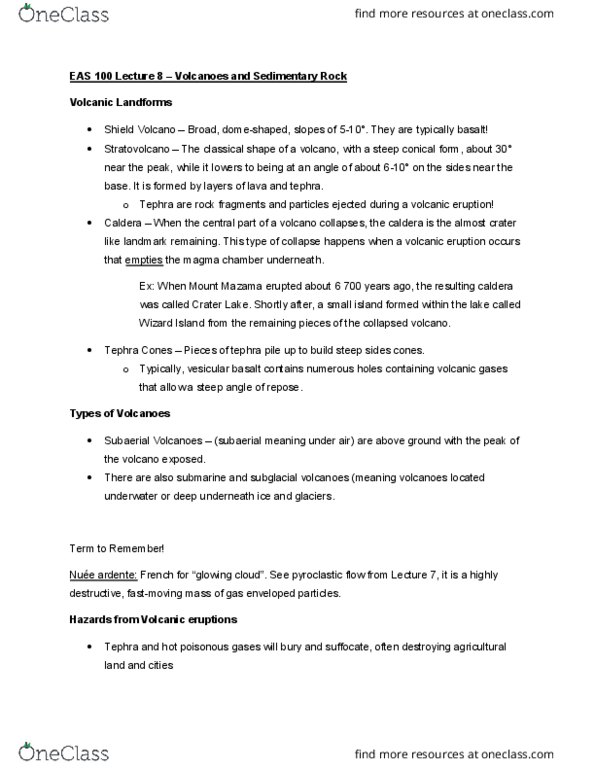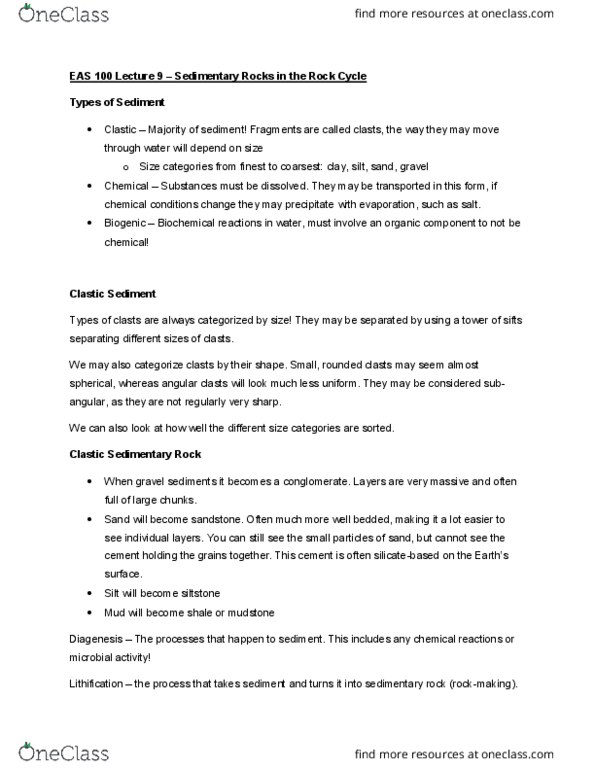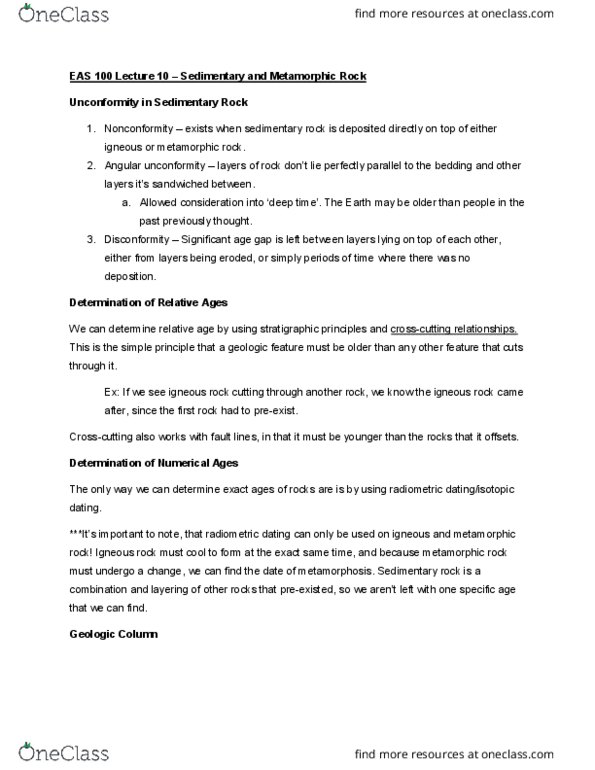EAS100 Lecture Notes - Lecture 9: Mudstone, Diagenesis, Siltstone
EAS100 verified notes
9/22View all
Document Summary
Eas 100 lecture 9 sedimentary rocks in the rock cycle. Types of sediment: clastic majority of sediment! Fragments are called clasts, the way they may move through water will depend on size: size categories from finest to coarsest: clay, silt, sand, gravel, chemical substances must be dissolved. They may be transported in this form, if chemical conditions change they may precipitate with evaporation, such as salt: biogenic biochemical reactions in water, must involve an organic component to not be chemical! Types of clasts are always categorized by size! They may be separated by using a tower of sifts separating different sizes of clasts. We may also categorize clasts by their shape. Small, rounded clasts may seem almost spherical, whereas angular clasts will look much less uniform. They may be considered sub- angular, as they are not regularly very sharp. We can also look at how well the different size categories are sorted.




